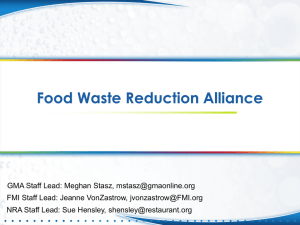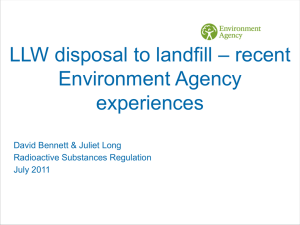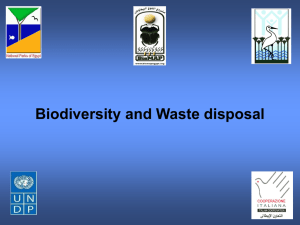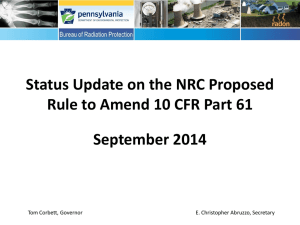Catholes and Latrines
advertisement
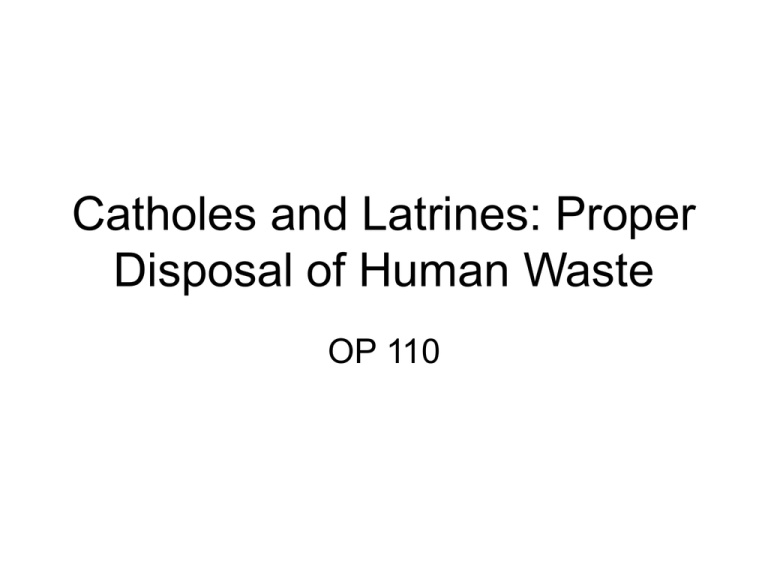
Catholes and Latrines: Proper Disposal of Human Waste OP 110 Consequences of Improper Disposal 1. Aesthetic impact: Aesthetics is the study of beauty and its appreciation. Someone who leaves human waste in visible sight of others is insensitive to beauty and inconsiderate of other users. Wilderness users must make an effort to preserve the beauty of the outdoors. Consequences of Improper Disposal 2.Physical impact: a) Human waste has the potential to adversely affect water sources profoundly by contributing to the spread of waterborne diseases such as giardia, cholera, typhoid fever, and other similar diseases. b) A variety of illnesses caused by human contamination have been documented in the wilderness waters. The most prevalent, giardiasis, is caused by a protozoan. Its symptoms are severe diarrhea, stomach cramps, and nausea. Properly disposing of human waste, along with practicing good hygiene, helps to minimize the spread of this illness. c) The presence of fecal bacteria in water systems is an indicator of contamination. Deer, coyote, sheep, beaver, and cattle are examples of other animals that may also be affected by waterborne organisms. Consequences of Improper Disposal 3. Safety: Failure to properly dispose of waste can attract animals to campsites, creating unnecessary risks for participants and adversely affecting wildlife habits. Disposal of Urine • Urine is a mostly harmless bodily product. Because of its salt content, however, urine can attract animals that may then dig up or ingest vegetation to get the salts. Another possible problem is that, in some regions of the world, urine is a carrier of parasites. 1. Taking care to urinate in nonvegetated areas and away from water minimizes potential harm to the wilderness environment. 2. There are some environments in which this general rule does not apply. When traveling in canyons with fastmoving rivers or in certain coastal areas, urinating directly in the water has less impact. Disposal of Feces • Disposal techniques vary from place to place. The method for disposal of feces that has the least impact is to carry them out. In some areas, this method is mandated. For example, portable toilet systems are required for river trips on the Colorado River through the Grand Canyon. This method is hardly practical for most backpackers. Disposal of Feces 1. Outhouses: Use wherever they are provided. 2. Catholes: A cathole is a small hole in the ground meant for a single use by one person. Use of a cathole is the preferred way of properly disposing of feces in most environments. Catholes a) A cathole can be dug with a trowel (use the trowel to move dirt not feces). Dig a hole 6 to 8 inches deep and 4 inches in diameter. b) Catholes should be located well away from trails and water sources. (200 feet or 70 adult steps) c) Squat over the hole and, when done, use a small stick to stir in soil. Cover with 2 inches of soil and disguise the hole as well as possible with natural materials. Catholes d) After using a cathole, properly dispose of the toilet paper by putting it in a plastic bag, and then cover the waste and restore the site. e) Catholes should not be used in heavily camped areas because of the increased likelihood of the catehole being uncovered by others. f) Consider the environment when determining whether or not to dig a cathole and how deep to dig it.

